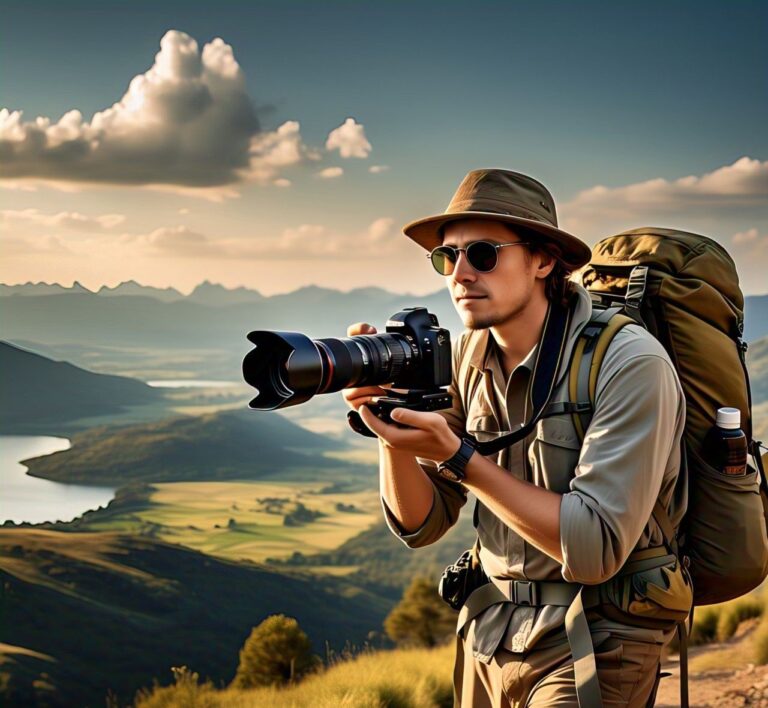Essential Guide to Yellowstone Bison and Bear Spray Safety Importance and Impact
Table of Contents
- Introduction
- Understanding Yellowstone’s Wildlife
- Significance of Bison in Yellowstone
- Dangers of Encountering Bison
- Bison Behavior What You Need to Know
- Role of Bear Spray in Wildlife Safety
- How Bear Spray Works
- Bear Spray vs. Firearms A Safer Alternative
- How to Use Bear Spray Effectively
- Best Bear Spray Brands for Yellowstone
- Legal and Ethical Considerations
- Visitor Safety Tips in Yellowstone
- What to Do if You Encounter a Bison
- Common Myths About Bear Spray and Bison
- Wildlife Conservation Efforts in Yellowstone
- Science Behind Bear Spray Effectiveness
- Essential Gear for Yellowstone Visitors
- Real Life Accounts of Bear Spray Success Stories
- FAQs About Bear Spray and Bison Safety
- Conclusion
1. Introduction
Yellowstone National Park is home to a vast array of wildlife including iconic bison. While these creatures appear peaceful they can be unpredictable and pose a real threat to visitors. One of best tools for protection against wildlife dangers including bear encounters is bear spray. This article explores role of bear spray in ensuring safety around Yellowstone’s bison and other wildlife.

2. Understanding Yellowstone’s Wildlife
Yellowstone is one of most biodiverse regions in United States. Park hosts
- Over 5000 bison
- Grizzly and black bears
- Wolves coyotes and elk
- Various bird species Each of these animals plays a crucial role in ecosystem but their wild nature demands respect and caution from visitors.
Yellowstone’s Ecosystem and Food Chain
Yellowstone’s ecosystem is delicately balanced with predators and prey coexisting. Introduction of wolves in 1990s helped stabilize bison and elk populations demonstrating how every species contributes to park’s environmental health.
3. Significance of Bison in Yellowstone
Bison are largest land mammals in North America and have roamed Yellowstone for thousands of years. These animals hold historical cultural and ecological importance. However their presence in popular tourist areas means visitors must remain aware of safety protocols.
Cultural Importance of Bison
For Indigenous tribes bison have deep spiritual and practical significance. Tribes like Lakota and Blackfeet have historically relied on bison for food clothing and tools making conservation efforts crucial for both environmental and cultural preservation.
4. Dangers of Encountering Bison
Bison attacks in Yellowstone are more common than bear attacks. Tourists often underestimate their speed and strength.
Common Reasons Bison Become Aggressive
- Feeling threatened by close human presence
- Protecting their young
- Mating season (July to August)
Statistics on Bison Related Injuries
According to National Park Service bison have injured more visitors than any other animal in Yellowstone. Between 2000 and 2015 over 25 documented injuries occurred due to tourists getting too close.
5. Bison Behavior What You Need to Know
Bison often display warning signs before charging. These include
- Snorting or grunting
- Pawing ground
- Raising their tails If you notice these signs it’s crucial to move away slowly without making sudden movements.
Seasonal Bison Behavior
- Spring More active due to calving season
- Summer Aggressive due to mating
- Winter Move in herds for warmth less aggressive
6. Role of Bear Spray in Wildlife Safety
Bear spray is a powerful deterrent against aggressive wildlife including bison. Though primarily designed for bears it can stop a charging bison if used correctly.
Why Bear Spray Over Other Defense Tools?
- Non lethal ensuring safety for animals
- Easier to use under stress
- Does not require precise aiming like firearms
7. How Bear Spray Works
Bear spray contains capsaicinoids derived from chili peppers. When sprayed it causes temporary blindness breathing difficulty and intense irritation giving user time to escape.
How Long Does Bear Spray Last?
Effects last 30 to 45 minutes allowing humans to retreat safely.
8. Bear Spray vs. Firearms A Safer Alternative
Firearms are often ineffective against wildlife encounters and using them can escalate danger. Studies show bear spray is over 90% effective in stopping animal attacks without causing permanent harm.
9. How to Use Bear Spray Effectively
- Keep spray accessible not in a backpack.
- Remove safety clip when an animal approaches aggressively.
- Aim slightly downward and spray in bursts.
- Move away slowly while keeping your eyes on animal.
10. Best Bear Spray Brands for Yellowstone
Top rated bear sprays
| Brand | Features |
| Counter Assault | 40ft range EPA approved |
| UDAP | High volume spray holster included |
| Frontiersman | 35ft range quick release trigger |
11. Legal and Ethical Considerations
- Bear spray is legal in Yellowstone but must be EPA approved.
- Misuse of bear spray (such as spraying on camping gear) is prohibited.
- Always dispose of used cans responsibly.
12. Visitor Safety Tips in Yellowstone
- Stay at least 25 yards from bison and 100 yards from bears.
- Avoid sudden movements or loud noises.
- Carry bear spray at all times.
- Travel in groups whenever possible.
13. What to Do if You Encounter a Bison
- Do not approach Keep a safe distance.
- Back away slowly Never run.
- Use bear spray as a last resort If a bison charges aim for its face.
14. Common Myths About Bear Spray and Bison
Myth 1 Bear spray doesn’t work on bison.
Truth While designed for bears it effectively deters other large mammals.
Myth 2 Bear spray is harmful to environment.
Truth It is non toxic and biodegradable.
15. Wildlife Conservation Efforts in Yellowstone
Yellowstone National Park is a model for wildlife conservation. Over years various organizations and government initiatives have worked to protect and restore wildlife populations particularly bison.
Bison Conservation Efforts
- Yellowstone Bison Management Plan helps control population levels and prevent disease transmission.
- Conservation groups work to reintroduce bison to tribal lands preserving their cultural and ecological significance.
- Efforts to maintain a balanced ecosystem prevent overgrazing and habitat destruction.
16. Science Behind Bear Spray Effectiveness
Scientific studies have proven that bear spray is more than 90% effective at stopping aggressive bear encounters and same principles apply to bison and other large mammals.
Why Bear Spray Works
- Active ingredient capsaicinoids affects animal’s mucous membranes causing temporary discomfort.
- Wide spray pattern ensures high accuracy even under stressful conditions.
- Unlike firearms bear spray does not cause permanent injury making it a more ethical option for wildlife deterrence.
17. Essential Gear for Yellowstone Visitors
When exploring Yellowstone it’s essential to carry right gear to ensure safety and comfort.
Must Have Gear for a Safe Visit
| Item | Purpose |
| Bear Spray | Essential for deterring aggressive wildlife |
| Binoculars | Observe animals from a safe distance |
| Hiking Boots | Protect feet on rugged terrain |
| First Aid Kit | Treat minor injuries and emergencies |
| Water Bottle | Stay hydrated during hikes |
| Map & Compass | Navigate trails safely |
| Food Storage Containers | Prevent attracting wildlife to campsites |
18. Real Life Accounts of Bear Spray Success Stories
Visitors and park rangers alike have reported numerous instances where bear spray has successfully deterred aggressive animals preventing injuries and fatalities.
Ranger Testimony
A Yellowstone park ranger shared how a group of hikers effectively used bear spray to stop a charging grizzly. Spray created a barrier allowing them to retreat safely.
Tourist Experience
A family encountered a lone bison on a hiking trail. As bison started moving aggressively toward them they used bear spray which deterred animal long enough for them to reach safety.
19. FAQs About Bear Spray and Bison Safety
1. Is bear spray necessary for Yellowstone visits?
Yes carrying bear spray is strongly recommended for all visitors. It is most effective deterrent against aggressive wildlife including bears and bison.
2. Can bear spray expire?
Yes bear spray has an expiration date usually around 3 to 4 years from manufacturing date. Expired spray may lose effectiveness.
3. What’s safest way to carry bear spray?
Bear spray should be easily accessible ideally attached to your belt or backpack strap with a holster.
4. Can bear spray harm humans?
Yes if accidentally sprayed in eyes or inhaled bear spray can cause temporary irritation. It’s crucial to handle it carefully and avoid spraying near people.
5. How far does bear spray reach?
Most bear sprays have a range of 30 to 40 feet providing a safe distance to deter wildlife.
6. Can I bring bear spray on a plane?
No bear spray is prohibited on commercial flights. It must be purchased at local outdoor supply stores upon arrival.
20. Conclusion
Visiting Yellowstone is a breathtaking experience but safety should always be a priority. Understanding bison behavior and carrying bear spray are crucial steps in preventing dangerous encounters. By respecting wildlife and staying prepared visitors can enjoy park safely and responsibly.







